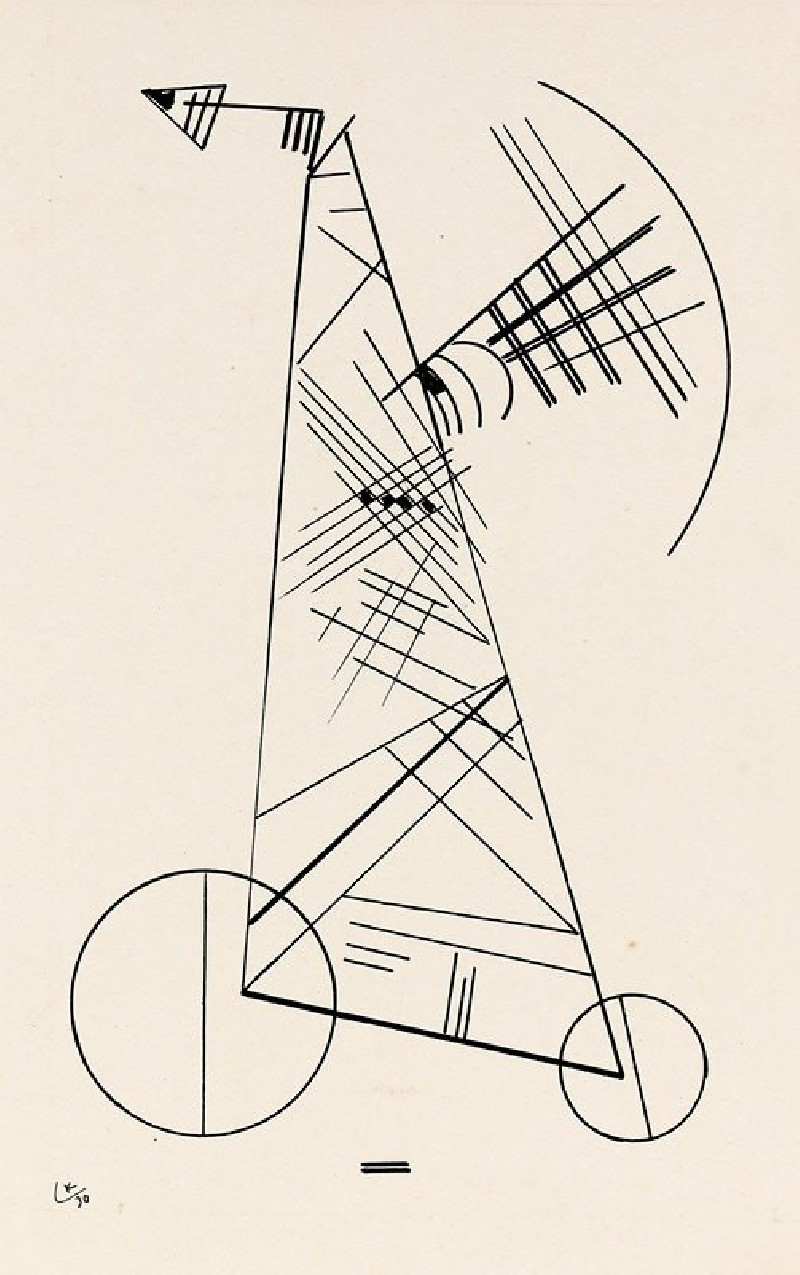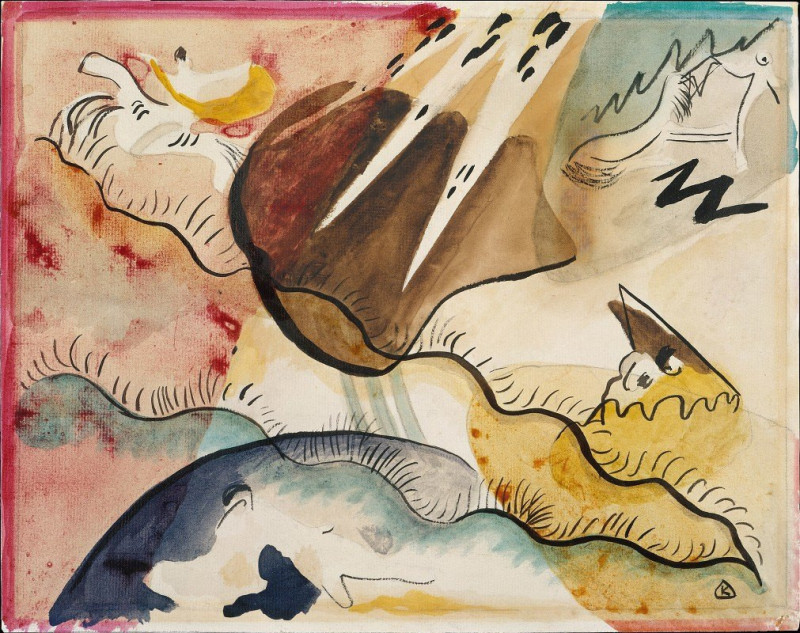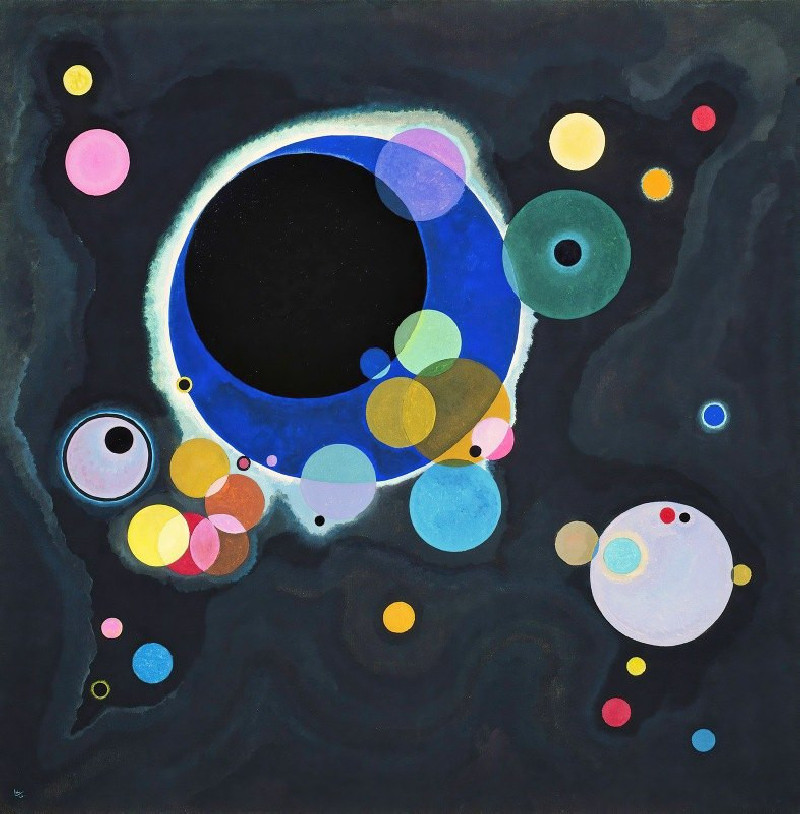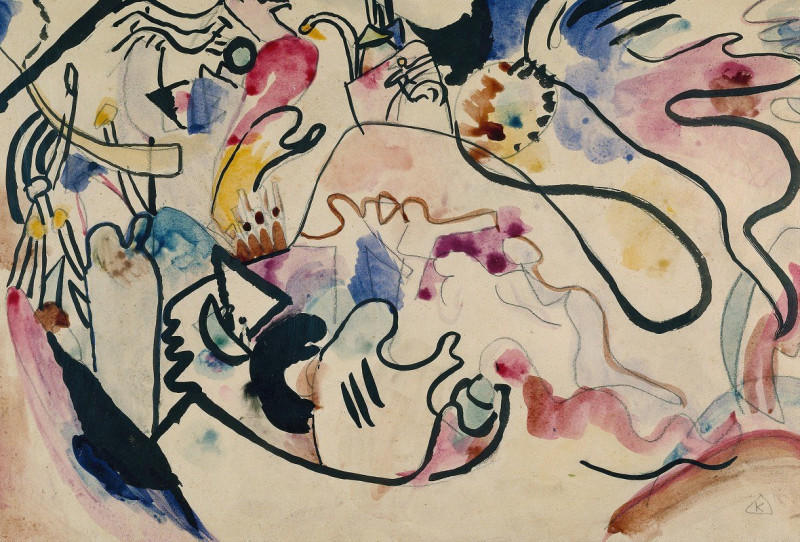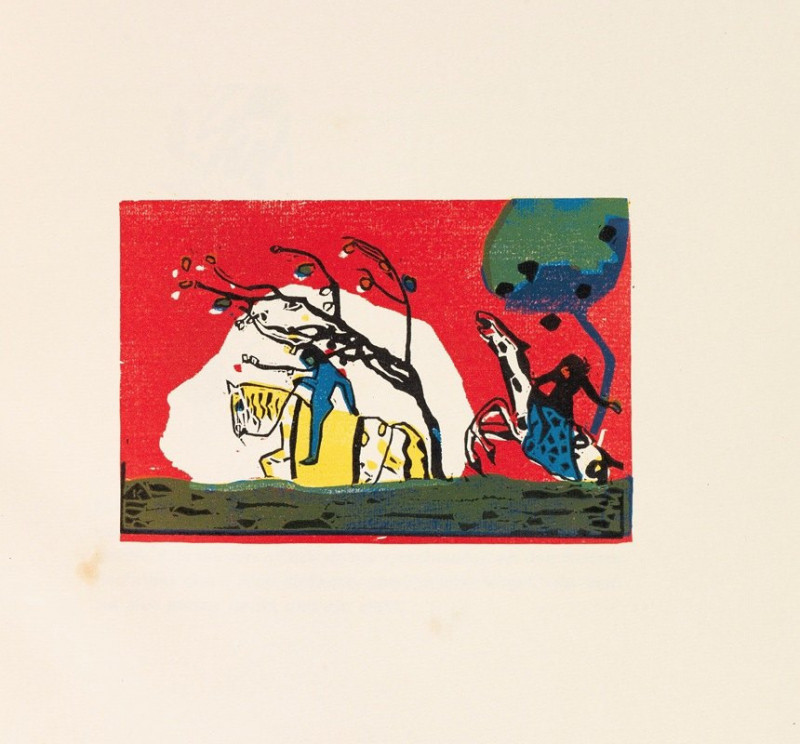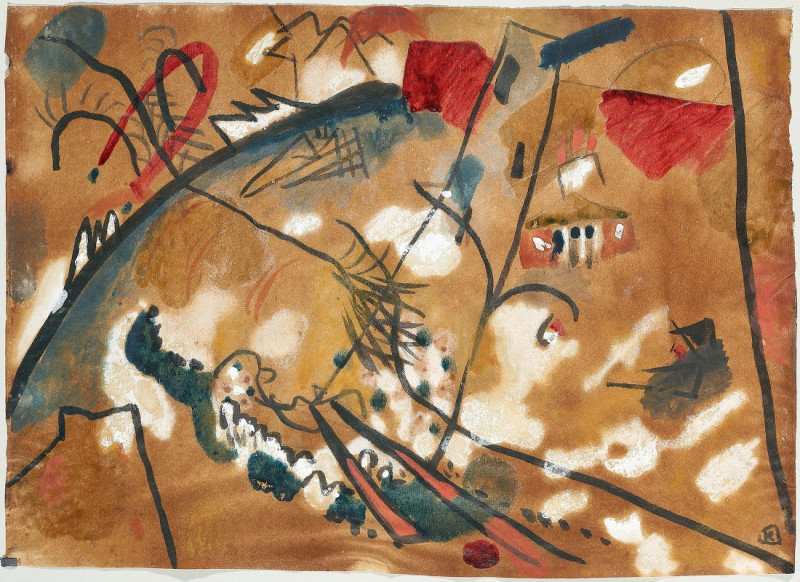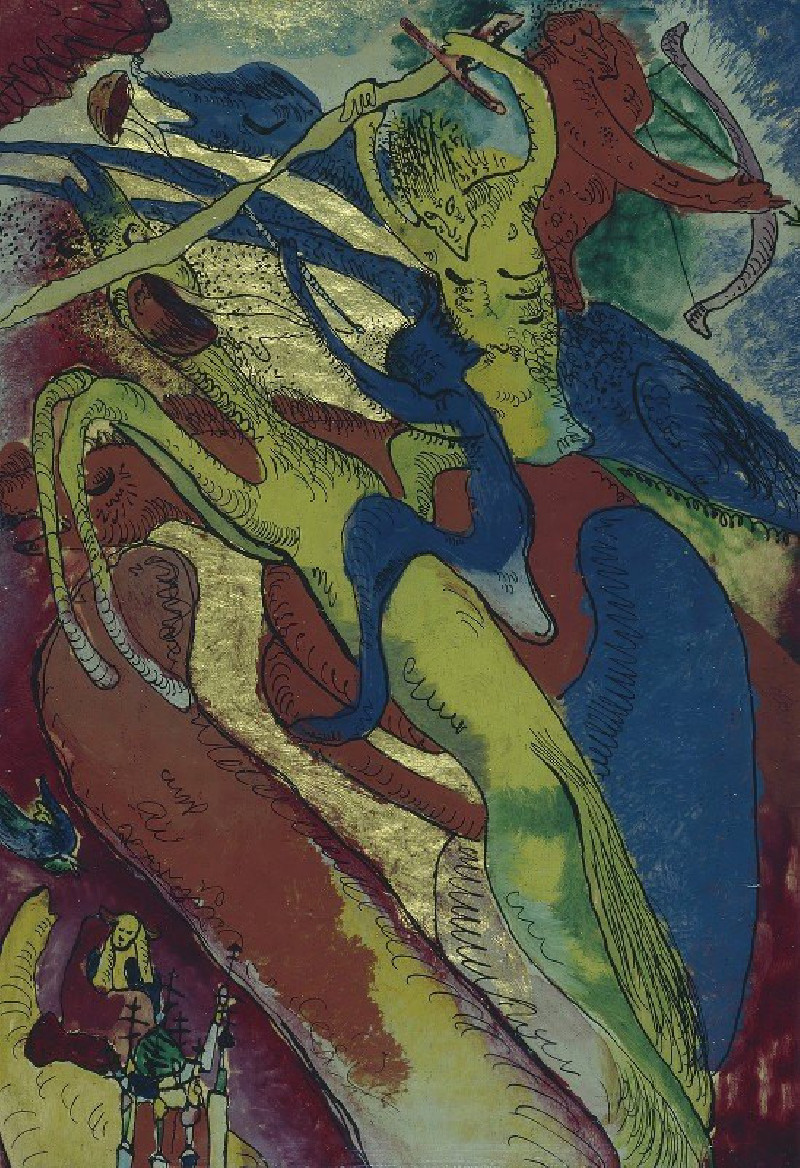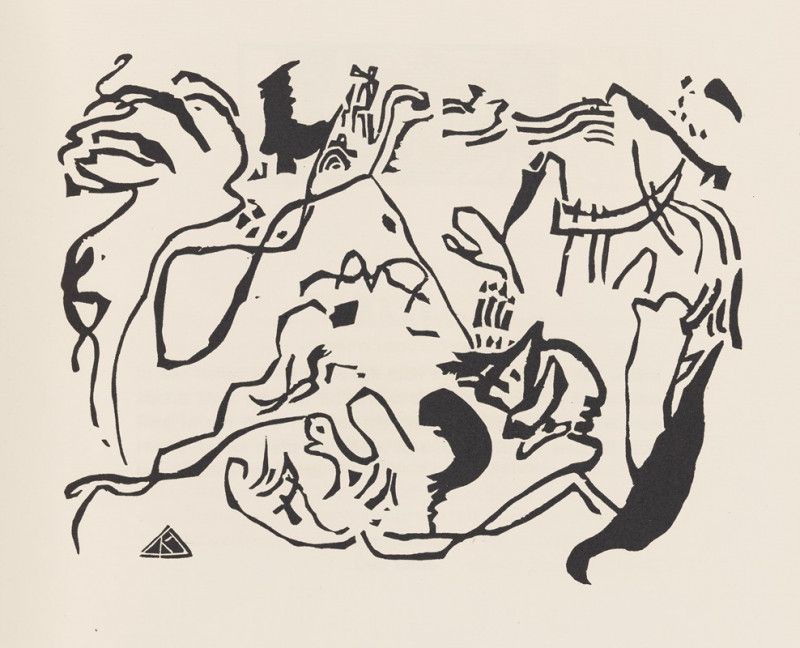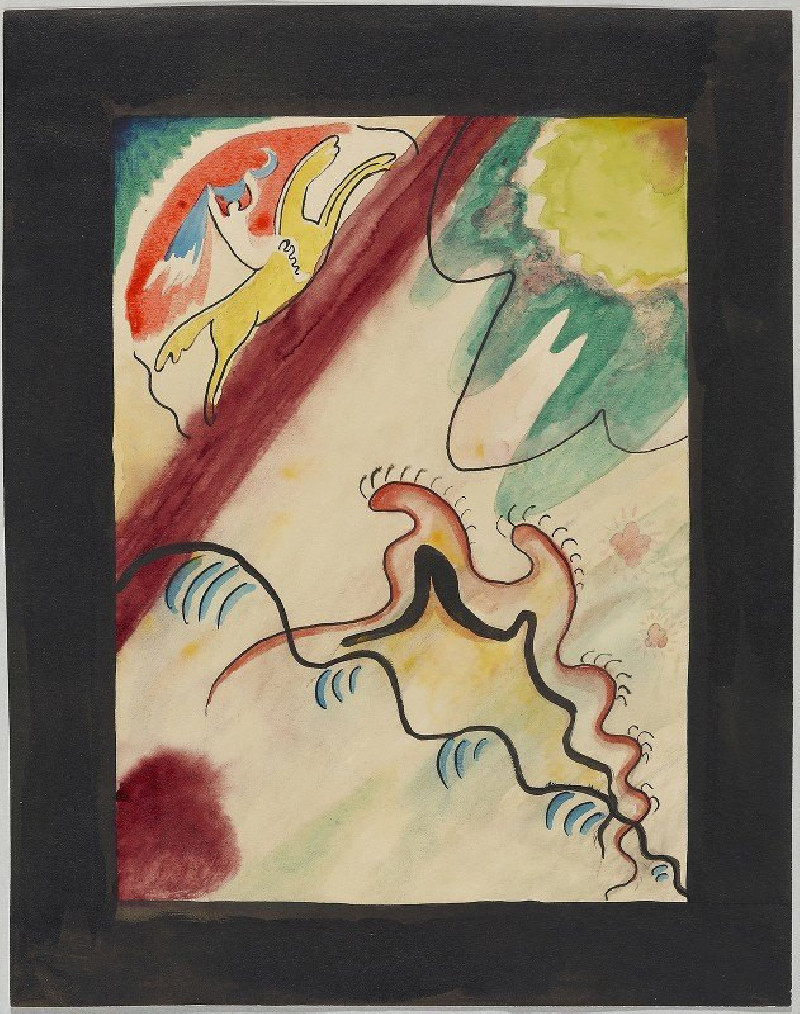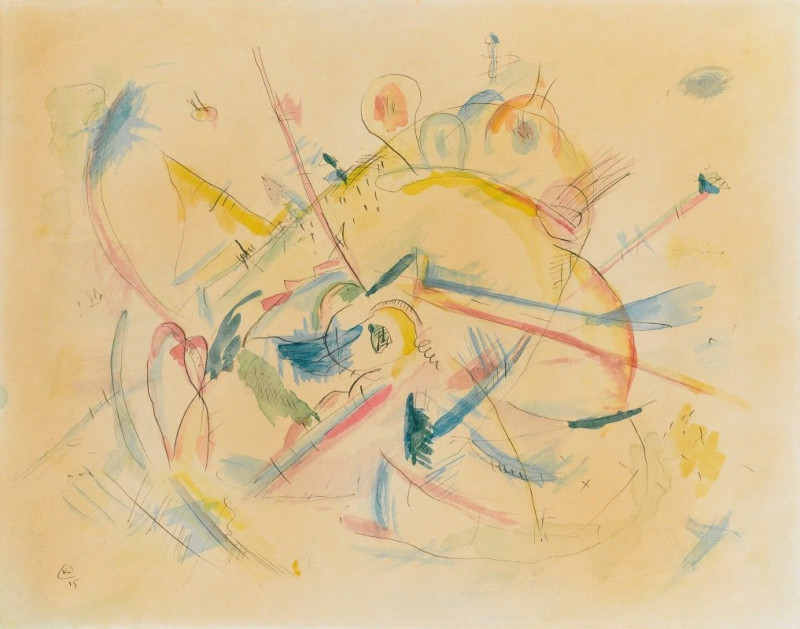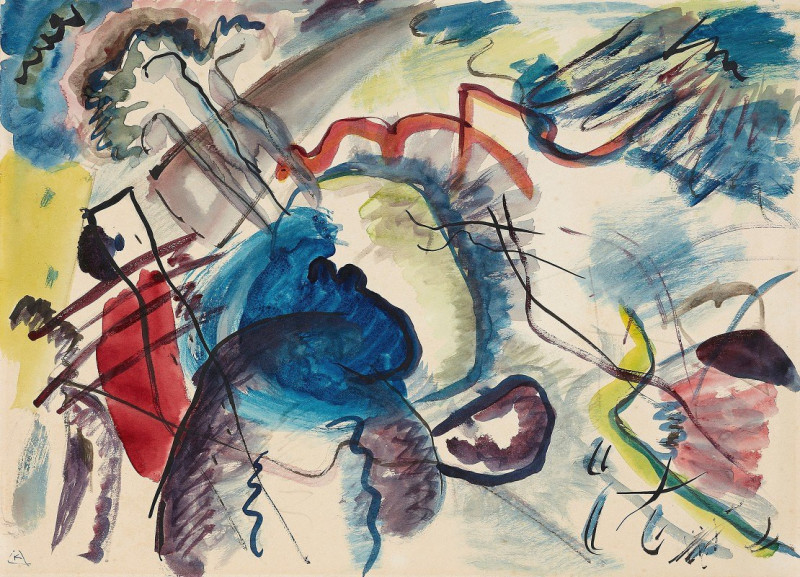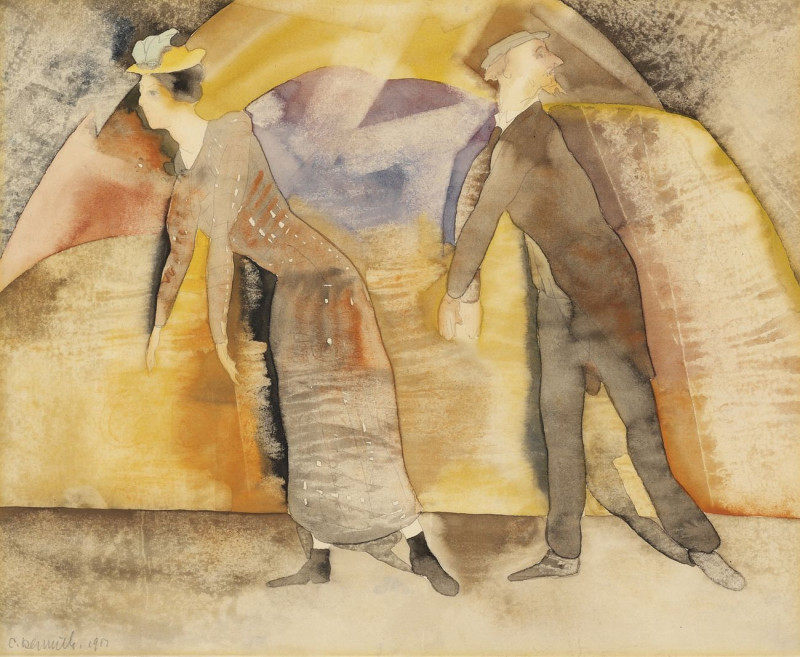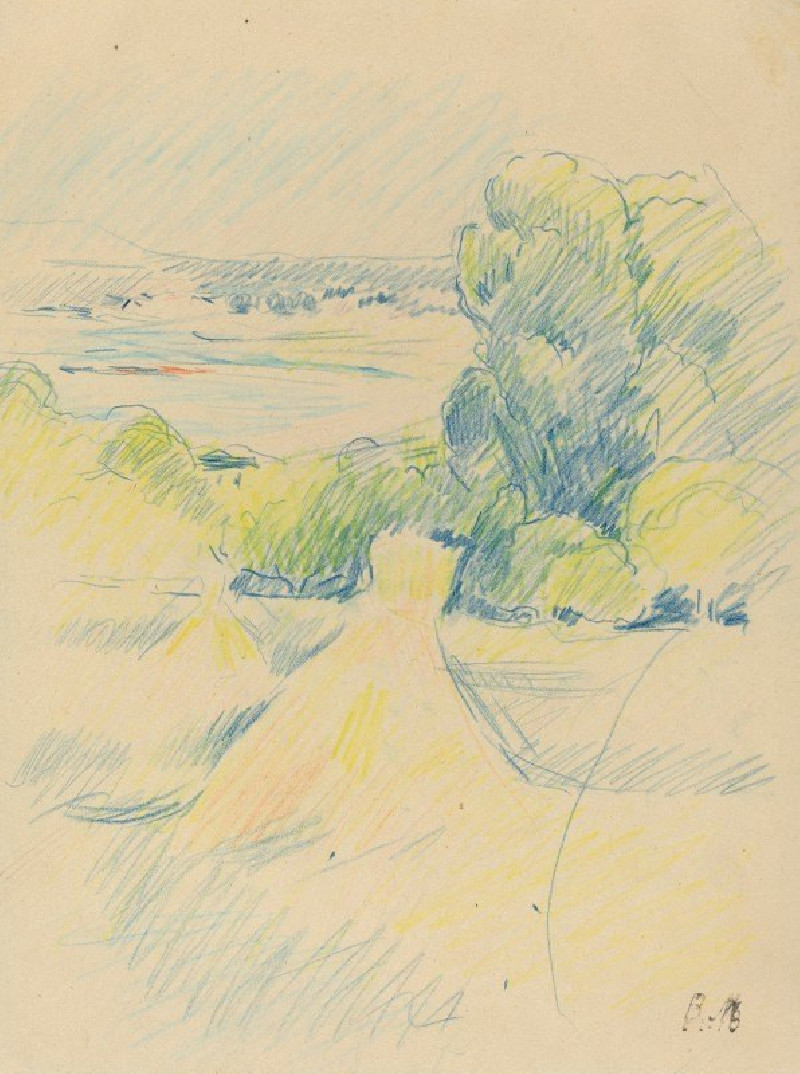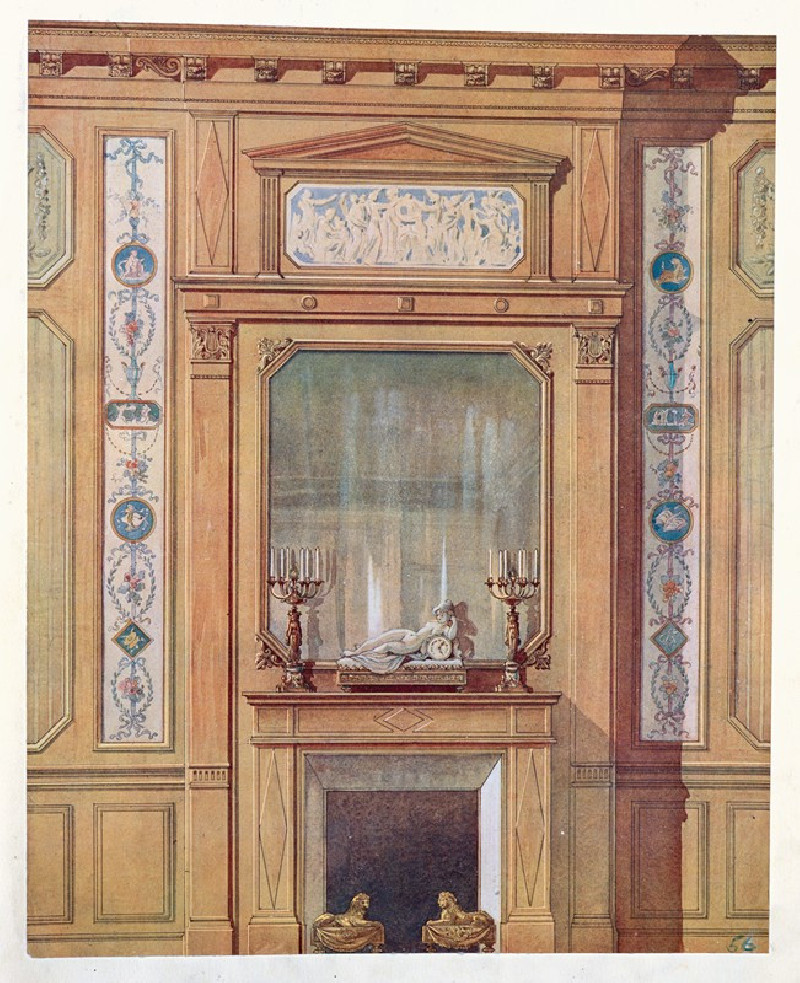Klänge Pl.24 (1913)
Technique: Giclée quality print
Recommended by our customers
More about this artwork
This painting, "Klänge Pl.24" by Wassily Kandinsky, created in 1913, is a striking example of his early exploration into abstract art and is particularly interesting for its use of bold, black lines on a plain background. The composition is a flurry of abstract forms and shapes interlocking and overlapping one another, which creates a dynamic, almost musical flow across the canvas. Kandinsky was deeply influenced by the idea of synesthesia, where one sensory experience triggers another, such as hearing color or seeing sound, and this connection is keenly felt in this work.The use of stark, black-and-white contrasts in this piece emphasizes its graphic qualities, and suggests movement and rhythm. Geometric and organic shapes converge in a chaotic, yet controlled manner that seems to represent the unseen forces of sound and motion. Kandinsky often aimed to evoke emotions and auditory experiences through his visual art, aligning shapes and colors with specific sounds and vibes.In "Klänge Pl.24," there seems to be a deliberate absence of figurative representations, moving completely into the realm of abstraction, which was fairly radical at the time of its creation. Each viewer might see different elements or feel different emotions, ranging from excitement to disorientation or even calmness, reflecting Kandinsky's belief in the deeply personal connection that each individual could have with a piece of art.
Delivery
Returns
Wassily Wassilyevich Kandinsky was a Russian painter and art theorist. Kandinsky is generally credited as the pioneer of abstract art. Born in Moscow, Kandinsky spent his childhood in Odessa, where he graduated at Grekov Odessa Art school. He enrolled at the University of Moscow, studying law and economics. Successful in his profession—he was offered a professorship (chair of Roman Law) at the University of Dorpat today Tartu, Estonia)—Kandinsky began painting studies (life-drawing, sketching and anatomy) at the age of 30.



